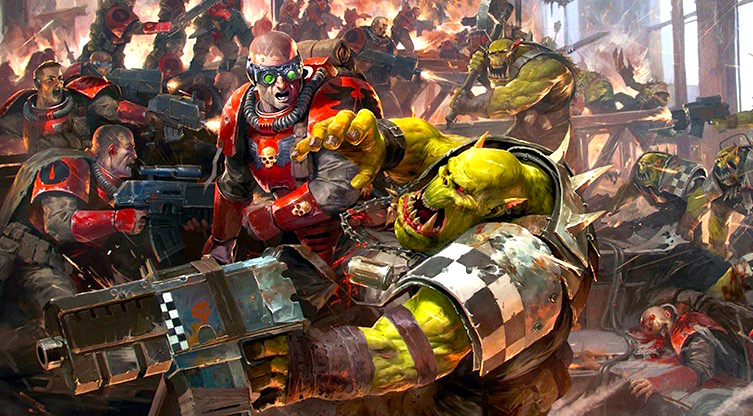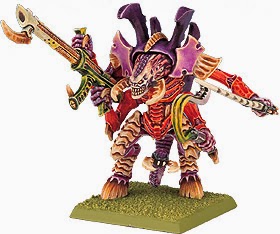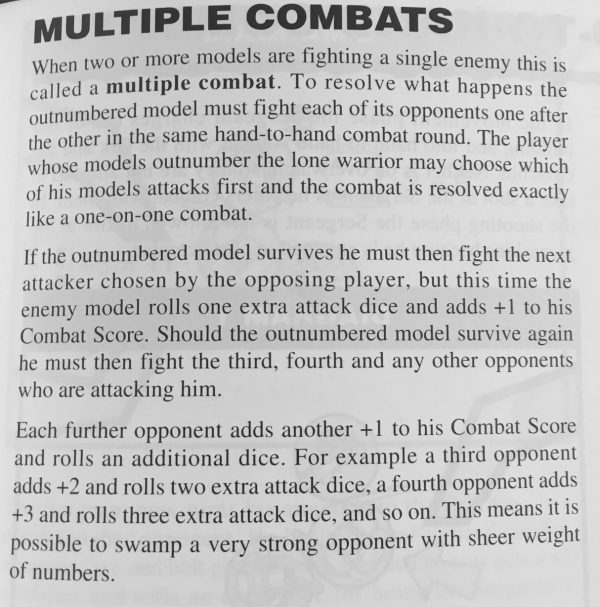40K: The Return of 2nd Edition Close Combat
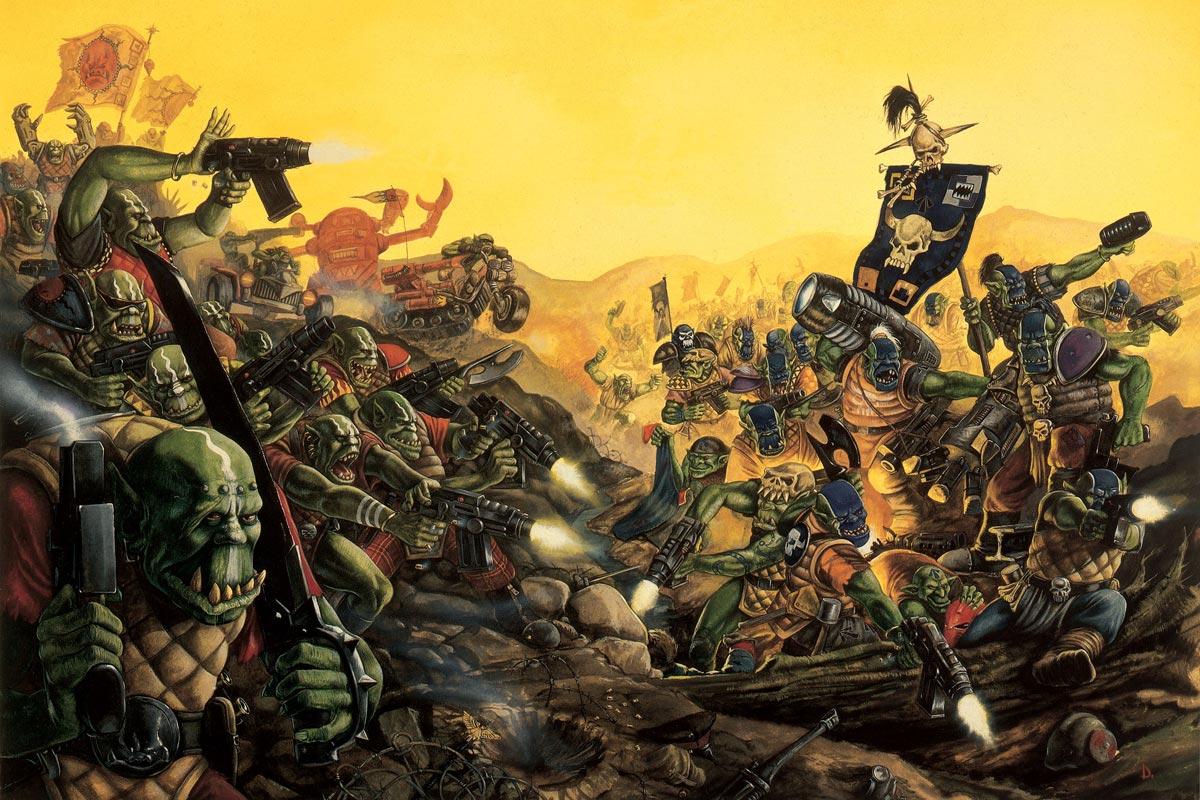

If Shadow War Armageddon is using the Necromunda Rules that means Close Combat is going to get old school.
We’ve been seeing lots of hints and teasers for the upcoming Shadow War Armageddon from Games Workshop. We’ve seen rules for Orks, Deathwatch Marines, and Genestealer Cultists. And we have even compared some of the old school Necromunda rules to what we’ve been seeing so far. But if it’s true that Shadow War Armageddon is going back to the past then I hope you’re all ready for some old school fisticuffs – It’s time to take a look at the Second Edition Close Combat Rules…
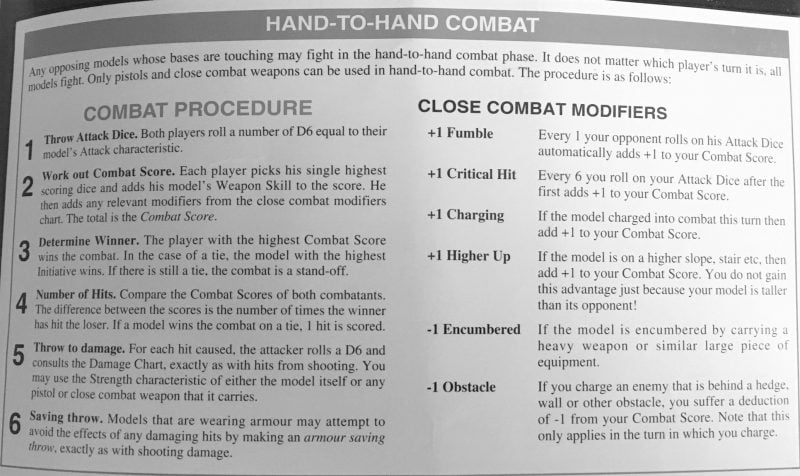 Close Combat Reference – Warhammer 40,000 Rulebook Second Edition
Close Combat Reference – Warhammer 40,000 Rulebook Second Edition
One of the things I really liked about Necromunda was the scale of the conflict. You had two, relatively small, gangs of thugs trying to duke it out for control, power, and resources. Most gangs starting out were only a handful of models, typically 6 to 12. If a gang got larger and powerful they might get up to as high as 15 but most of the games I played were usually between 8 to 10 models per side. (I did see one gang with as many as 20 gangers but that was not a common occurrence.)
That scale was perfect for these close combat rules. Why? Because most of the fights were 1-on-1, sometimes 2-on-1. These assaults were brutal and decisive, especially once you started factoring in swords for the parry effect. Couple that with the fairly light armor and the higher relative damage and you can see quickly things could go downhill for the loser.
If they bring this system back for Shadow War Armageddon, I’d be okay with it – but it plays out much different than 40k combat now. It’s a slower but more deliberate system – it’s one that works for skirmish games but can get unwieldy in larger conflicts.
Second Edition Hive Tyrants: “We like the old school combat rules…”
One of the largest shifts in the close combat phase was when the threat ranges increased. If you didn’t play second edition it’s pretty easy to overlook the key sentence from the rules above:
“Any opposing models whose bases are touching may fight in the hand-to-hand combat phase.”
In essence, if you weren’t in base-to-base you weren’t able to attack directly. And even if you were in base-to-base with multiple models each combat was resolved one at a time.
Let that sink in for a moment – if a model was surrounded by say 5 enemy models and they were all in base-to-base, then you would have to resolve EACH 1-on-1 combat individually. The only advantage a single model had from the extra bodies was an increasing +1 to their Combat Score and a matching extra attack die. Now, that could help drag down a powerful character. But sometimes, it would backfire…
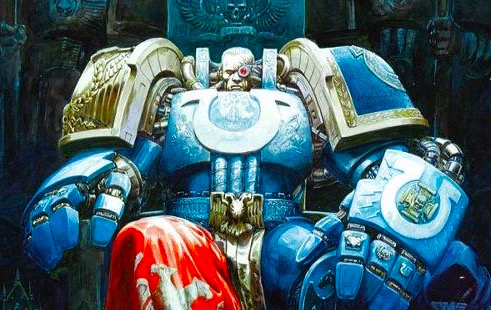 Guess who got to add that same bonus to his attacks when he was fighting multiple opponents…
Guess who got to add that same bonus to his attacks when he was fighting multiple opponents…
Big blocks of units getting stuck-in with close combat would really drag a game’s pace down. Frankly, the close combat just doesn’t scale very well in larger model games. But it’s not a bad system overall. Typically, the model with more attacks and a higher weapon skill would defeat a lesser skilled opponent. This sounds accurate for a battle between two opponents – and there was always a chance the higher skilled model would simply roll a few fumbles and end up in trouble.
For a game in the scale of Necromunda the system works. Each model is acting independent and this type of combat feels appropriate. It’s more cinematic and narrative close combat that the modern 40k close combat rules. It represents a duel between two opponents and it works in that regard.
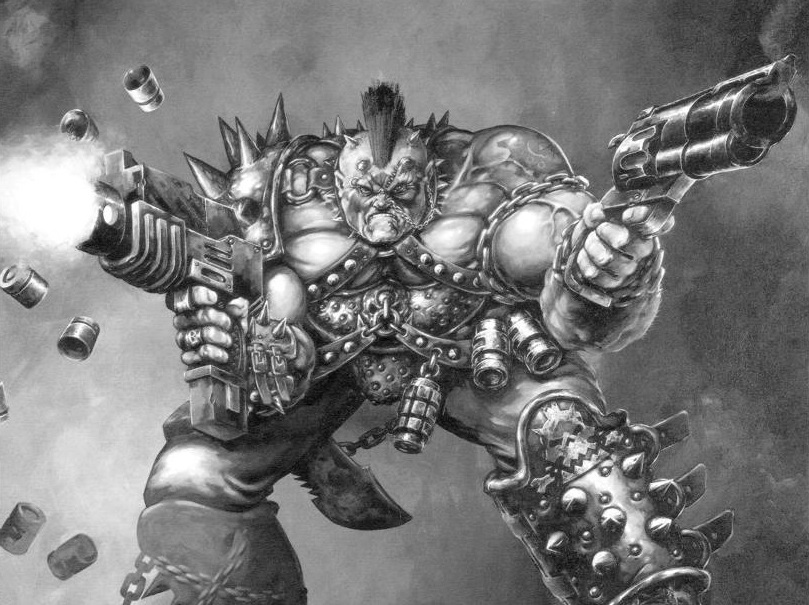 Yu-gi-oh ain’t got nothin’ on my DUELS!
Yu-gi-oh ain’t got nothin’ on my DUELS!
On the flip side, I don’t see this system coming back in 8th Edition 40k. I think Shadow War Armageddon is going to be a stand alone game, outside of the mainstream 40k rules. This is purely based on the fact that this system does not fit the larger scale of the conflicts in 40k. We’ve only seen the model counts increase over time and a clunky, slower game will lead to folks getting bored or worse, actively avoiding parts of the game. Second Edition close combat was great for epic 1v1 fights – but not so great for a game where squads are duking it out en masse.
If you want to check out more from Warhammer Second Edition, here is our Retro Corner Review:
And if you want a peek at the possible future ruleset for Shadow War Armageddon then check out our Necromunda Retro Corner Review:
What do you think of Second Edition’s Close Combat Rules? Are you looking forward to them or do you hope they stay in the past?

